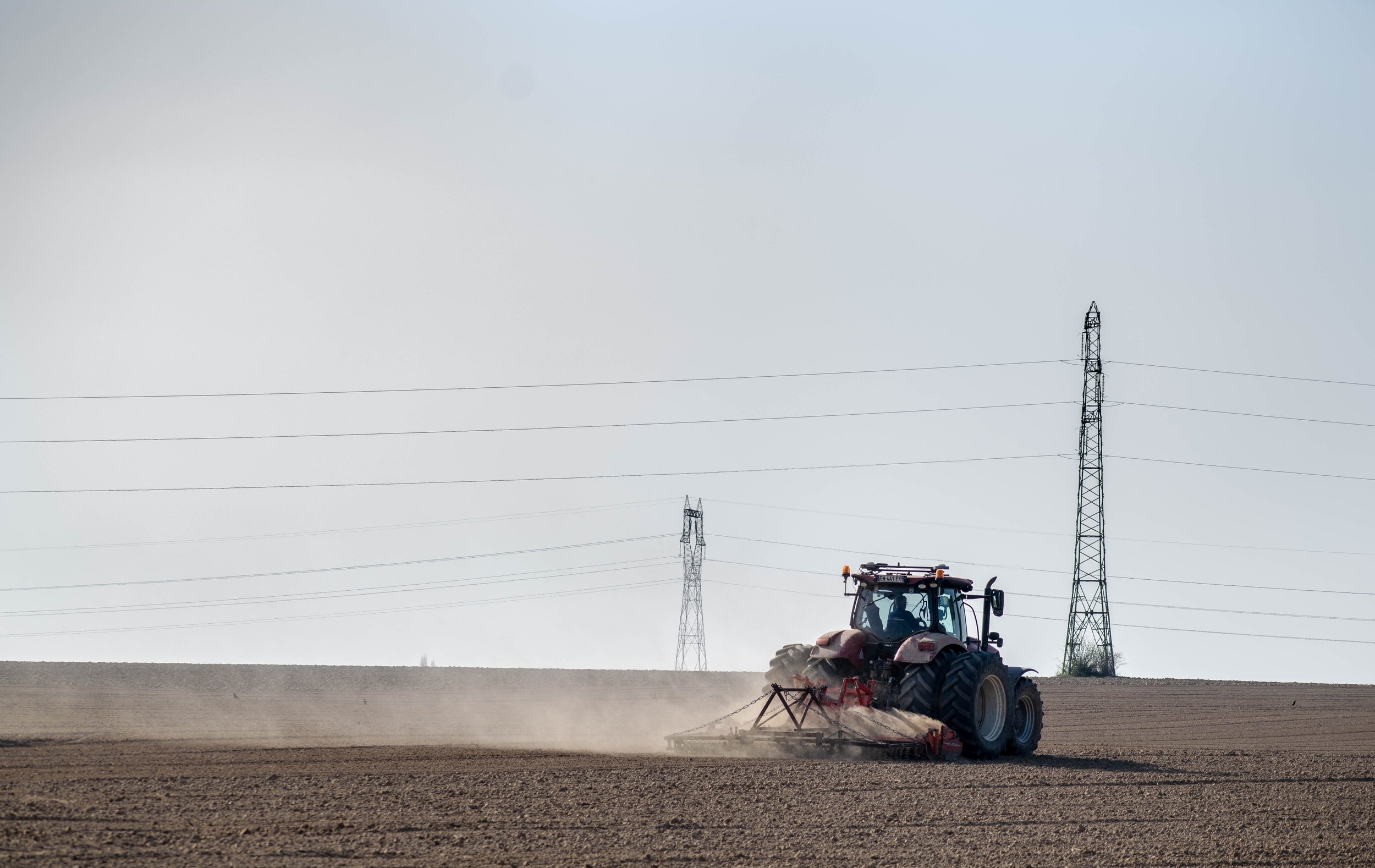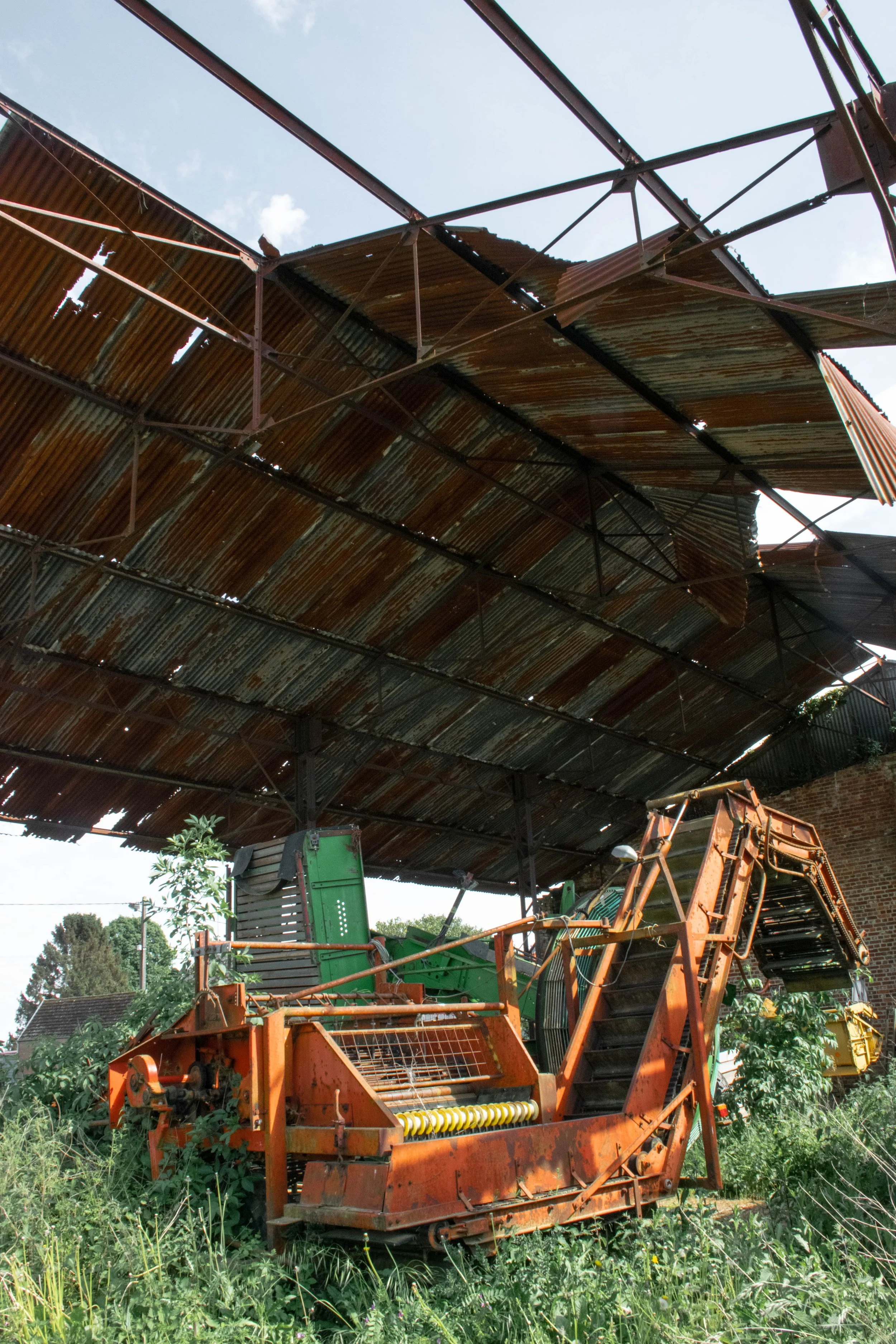
Large-scale farming
Let's explore here the work of the farmers of " large-scale crops " in Somme, Northern France, where the "rules" of agriculture, an age-old activity, have been revolutionized, where the geography, the standards and the scales that have conditioned and shaped the cultivation of the land since time immemorial have been stretched in proportions that I still struggle to grasp. A rural world as old as fascinating, yet keeping in tune with the modernity of our contemporary societies.
Long nets spread over long lines of salads, to offer a shelter agaisnt wildlife
What strikes me most while exploring these landscapes, still new to me, are the size of the fields and the technicality of the cultivations. Let's put things in perspective, I grew up in Brittany, a region of bocage and breeding with soils of average fertility, while the Picardy plateaus, with their extremely fertile soils, are intensively exploited to produce cereal crops (barley, wheat), root crops (potatoes, sugar beet, carrots) or even colza and peas. The hedges of trees between the plots or at the edge of the road as well as the ditches where ferns proliferate do not exist here, they used to though, and the space is more monospecific, one can imagine the necessity to push the yields to feed a machine of 67 million inhabitants
This aerial view reminds me of a wild nature, but not very useful for us under that form, taking the shape of a Noah's ark -a shelter of vegetal species- splitting the waves of another world, vegetal too but living at a different rhythm, an army of a single species, changing completely every year, legions of plants growing in furrows, forming waves that this ship of grasses and shrubs crosses. I find a certain relaxation in these landscapes which seem to have been drawn with a string, or rather by a GPS-guided tractor, where the well-packed mounds of earth intended to accommodate potatoes remind me of the motifs of a Japanese dry garden.

the barren soil before the sprouting phase highlights the geological nature of it
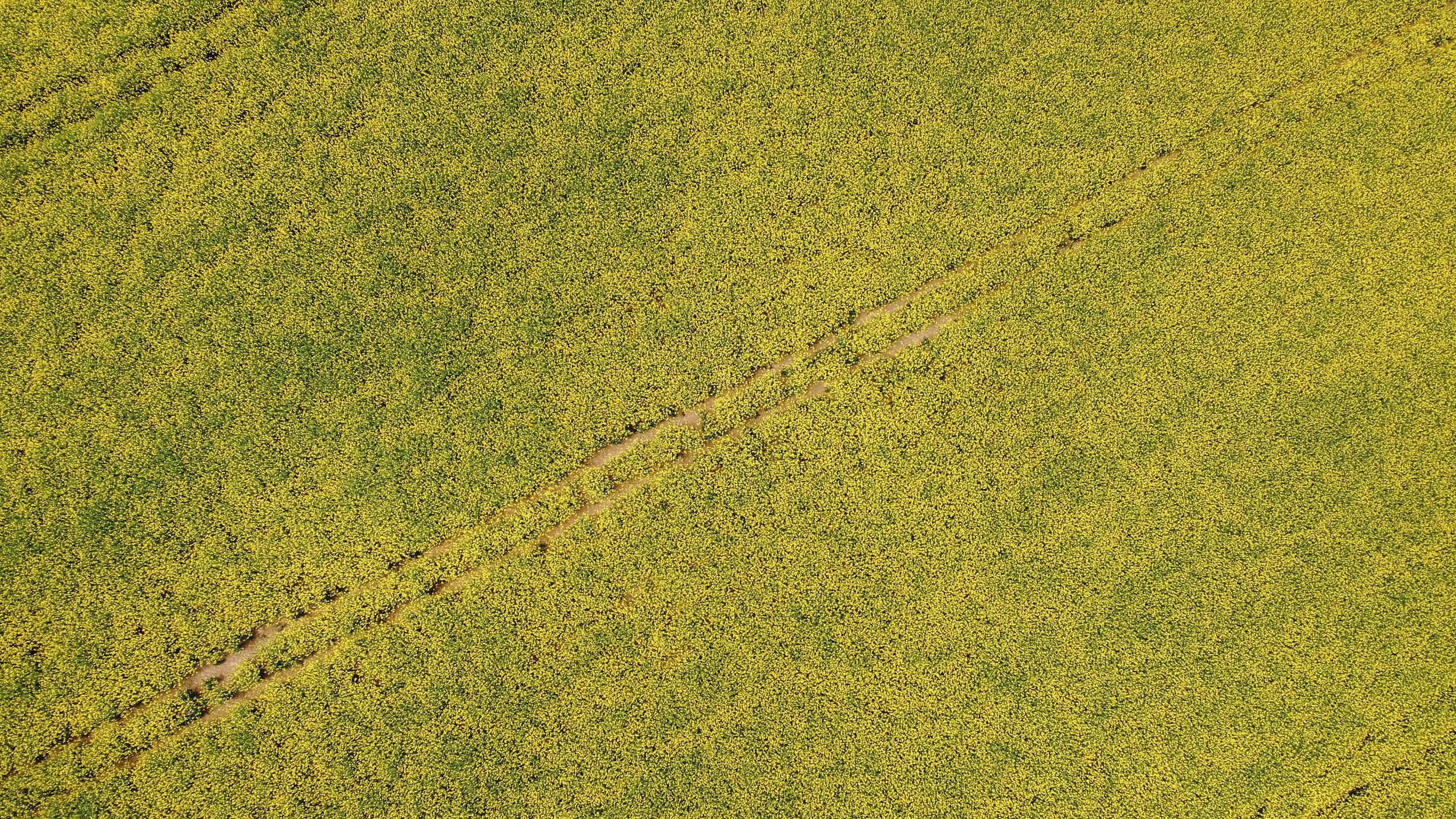
Colza yellow
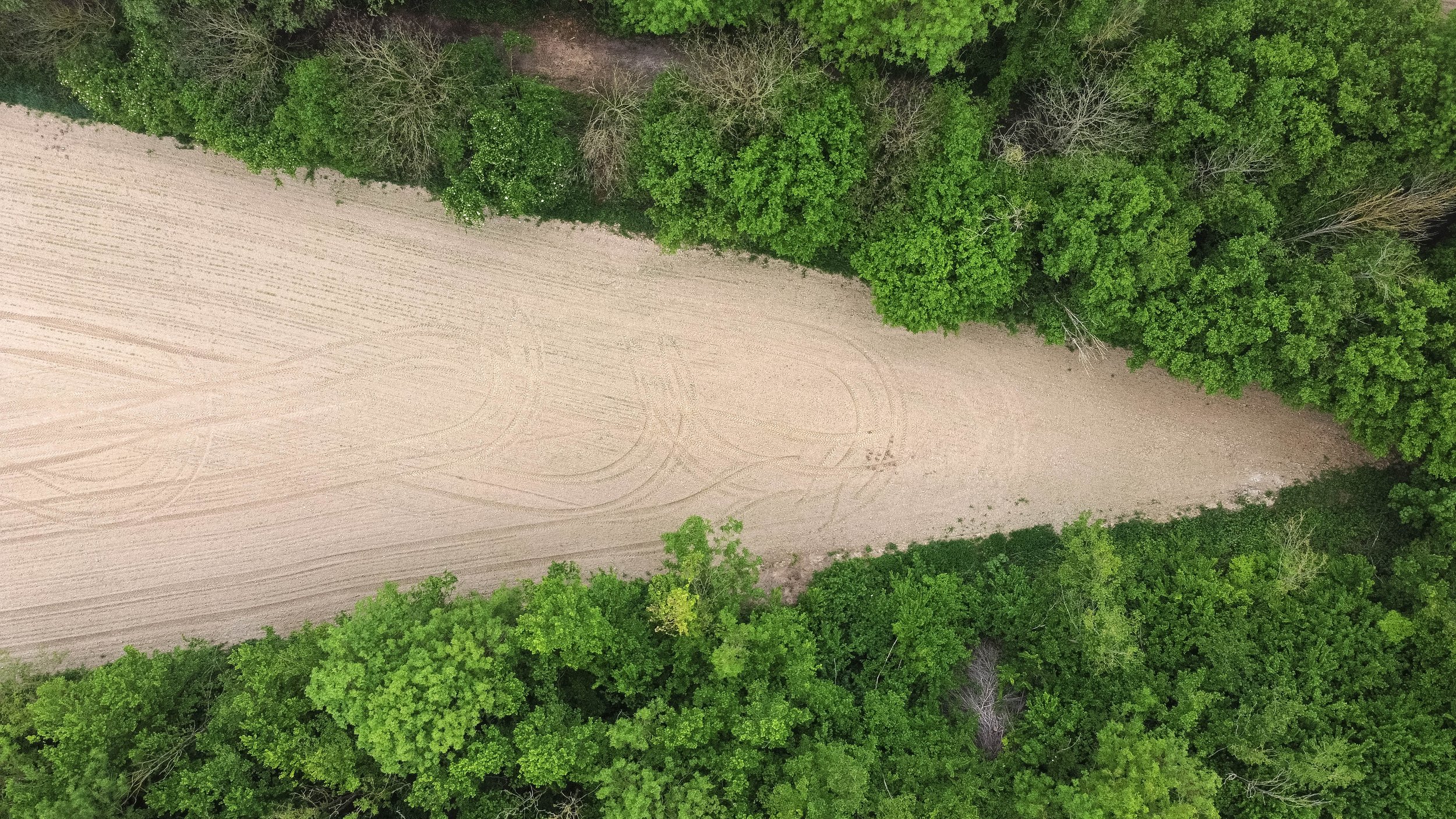
Incision
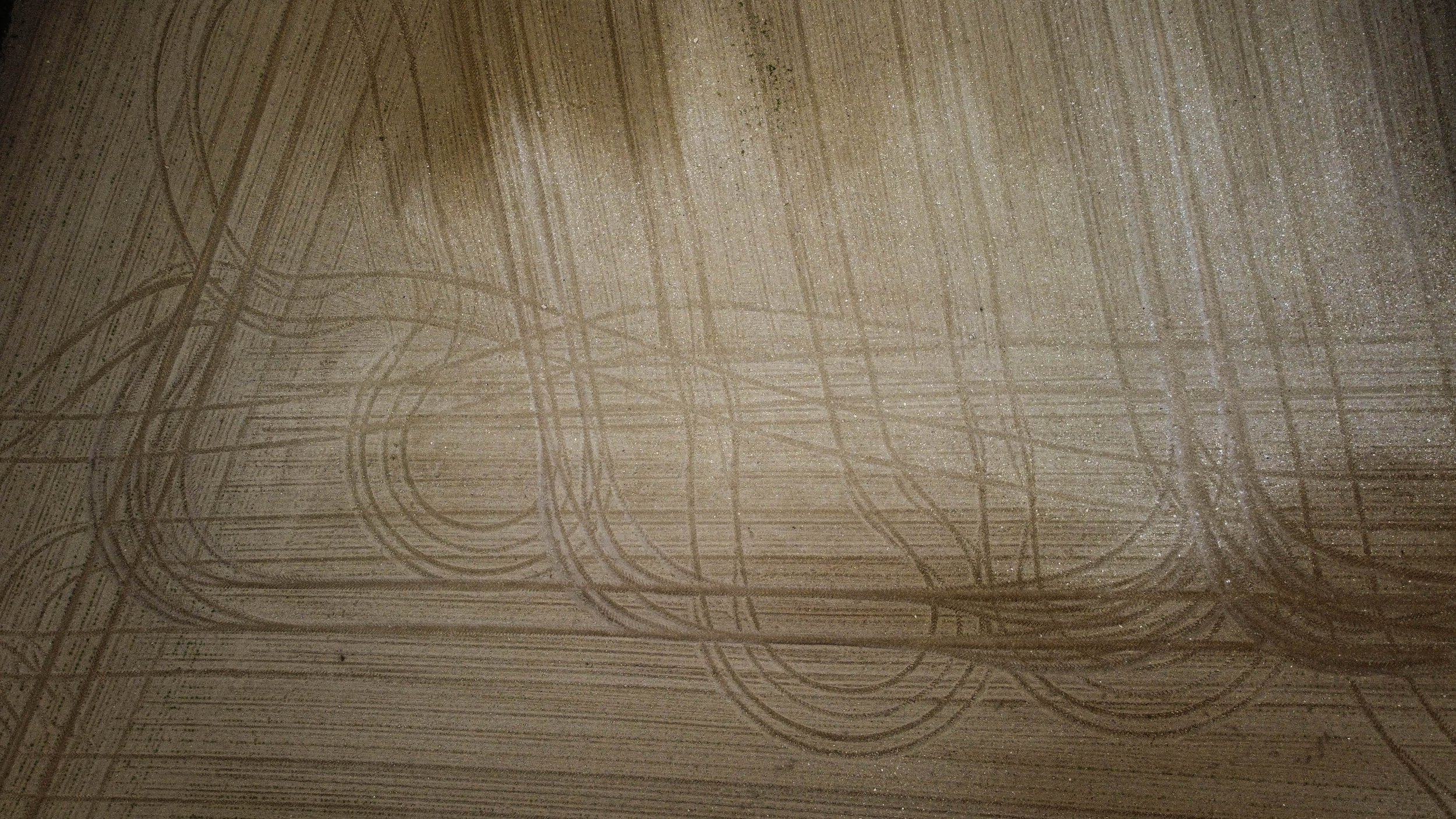
Tractors' ballet

Colza et blé avant l'épiaison

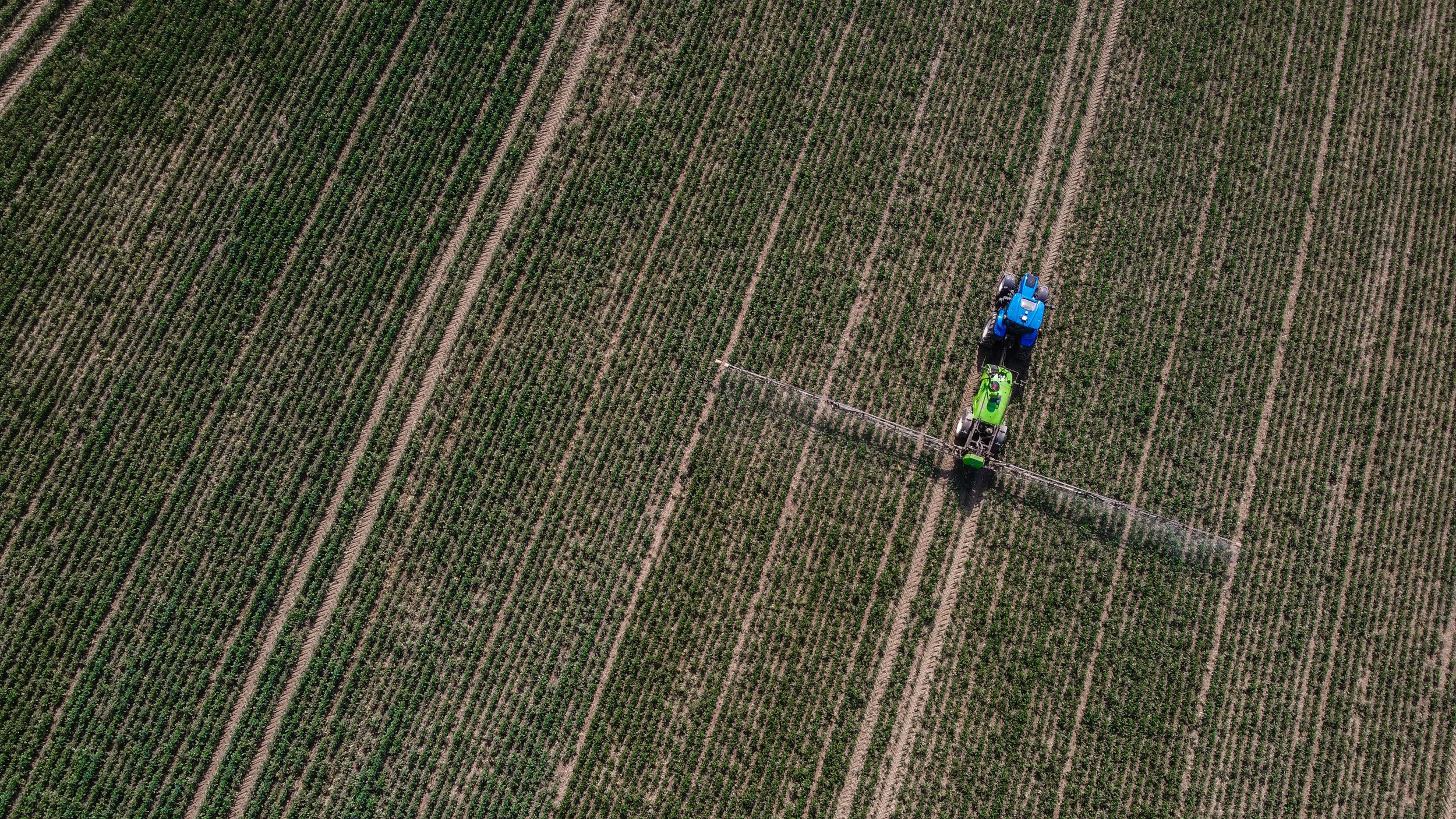

Tractors' ballet

A lush islet
The importance of soil
One sentence I've been told struck me the many times when I spoke with people about the agricultural landscape. I have sometimes asked if there were any orchards or market gardens in the area, to which they replied "No, the land is too good for that". I find this answer fascinating: usually, the physical geographical constraint (temperatures too low, too high, climate too dry, etc.) limits the number of feasible production activities, so one must by default choose the most profitable and feasible one too at the same time. Here, it is the opposite: the limit is up, all the conditions are met for many types of crops, but the soil and geography determines more than anything else what will be grown there: it will be large scale farming for cereals and tubers cultures, because growing anything else would be a waste of these so fertile lands.
Mr. Carpentier is adjusting the booms to apply the fungicide on 30 hectares
In a field, far from the main road, I meet Mr. Carpentier who is spraying nitrogen, a fertilizer, for a wheat crop, a type of crop that is suffering because of the drought that is raging this month of May. He has been a farmer in the neighboring village for as long as he can remember, like his father, his grandfather, his great-grandfather and probably even further back. I understand him when he tells me that "It is earth that flow through my veins, not blood! "He puts in a considerable amount of work in the fields all week, not to mention the accounting, which is the lot of most farmers today, but he doesn't seem to mind too much, that's just the way it is. This uncommon workload today is the reason his children don't want to succeed him, he tells me. Our service society, where everyone prefers to make a living working in an office and where food is more affordable and abundant than ever before, makes farming, especially here, a lonely profession where a single man takes care of several dozen hectares, behind the wheel of a big tractor, with his tools and where the prospects of enrichment are slim. With his 100 hectares, which makes him a "small" according to local standards, he farms the typical crops of the region and proudly tells me what is currently growing in his plots.


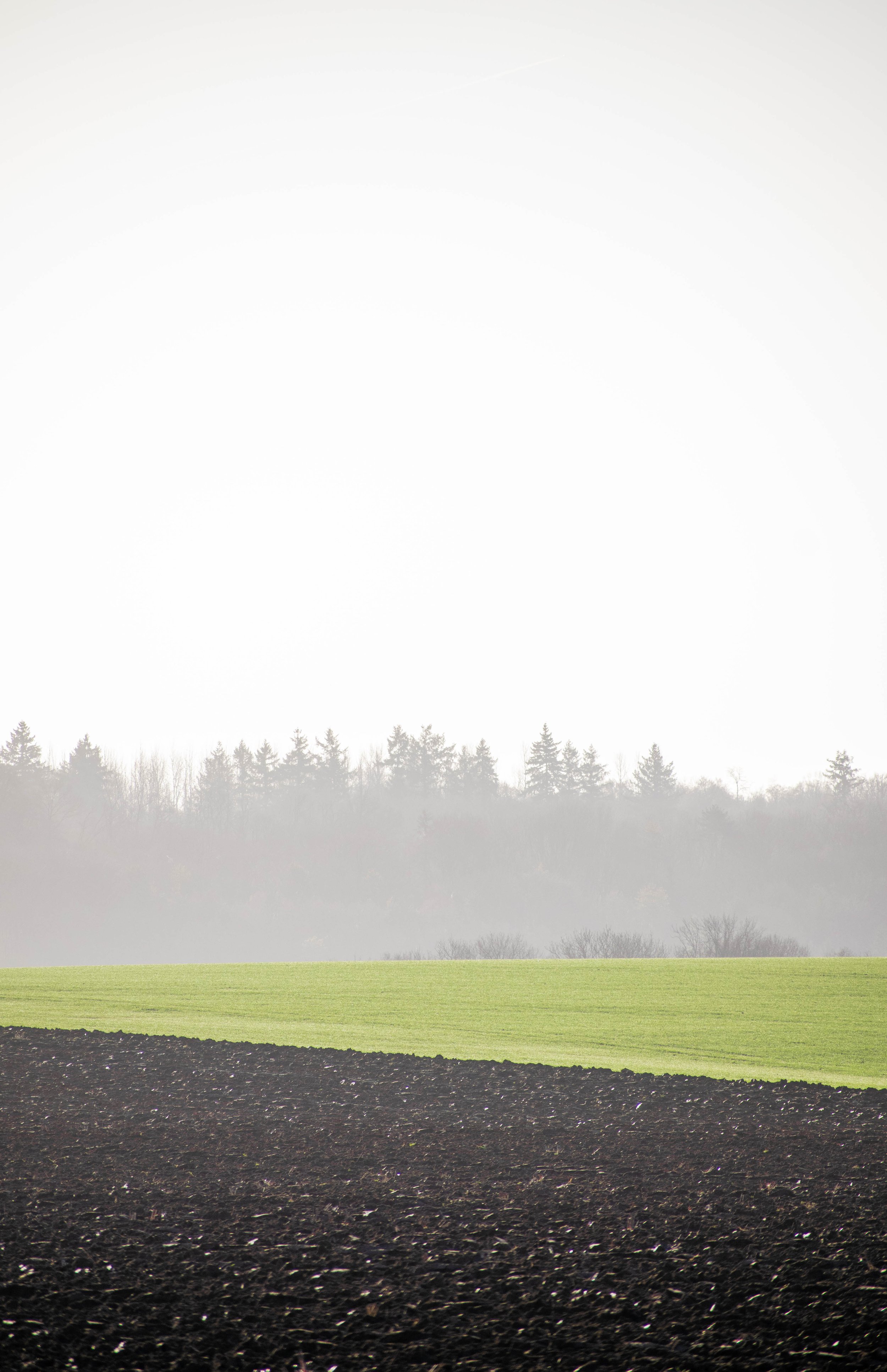


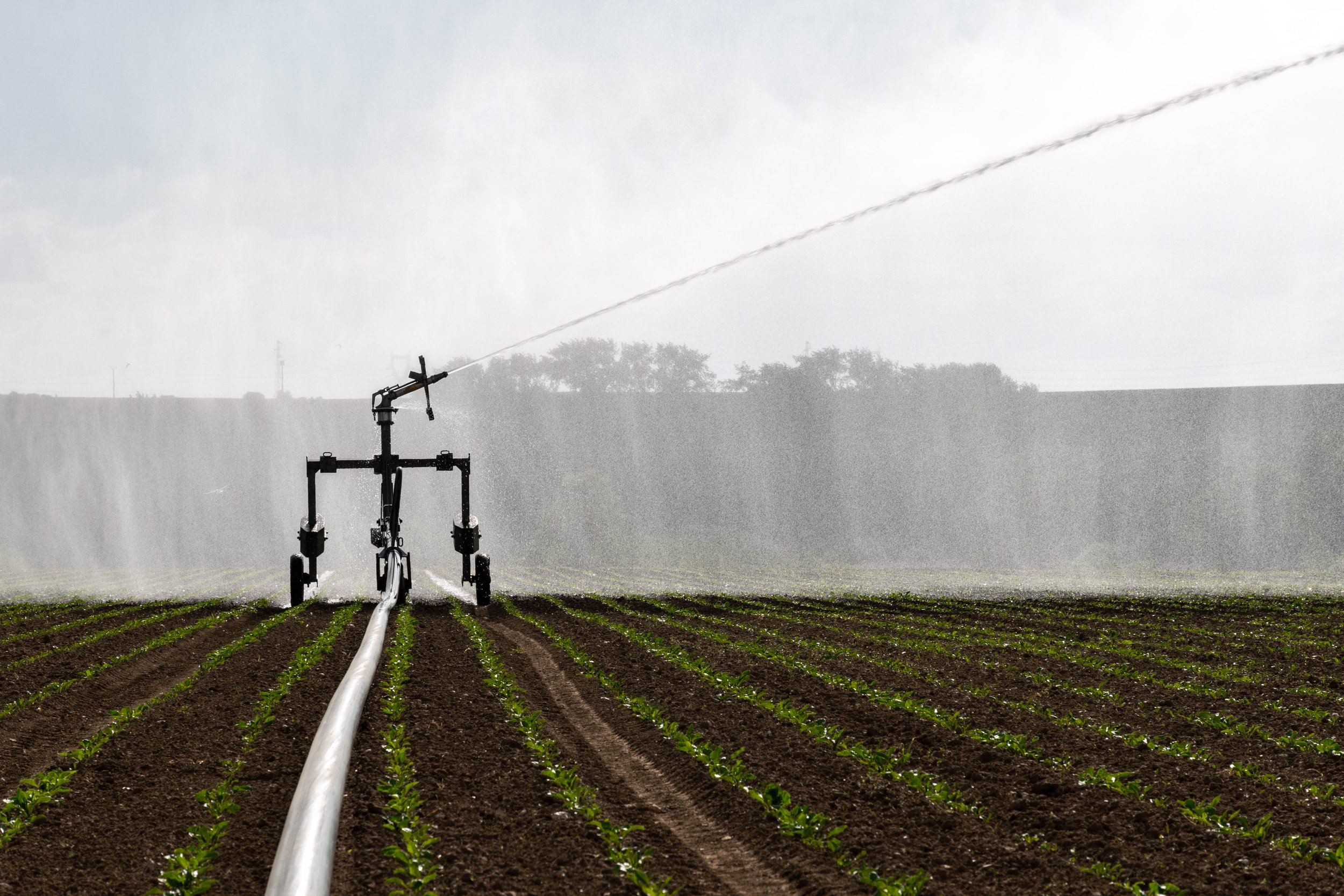




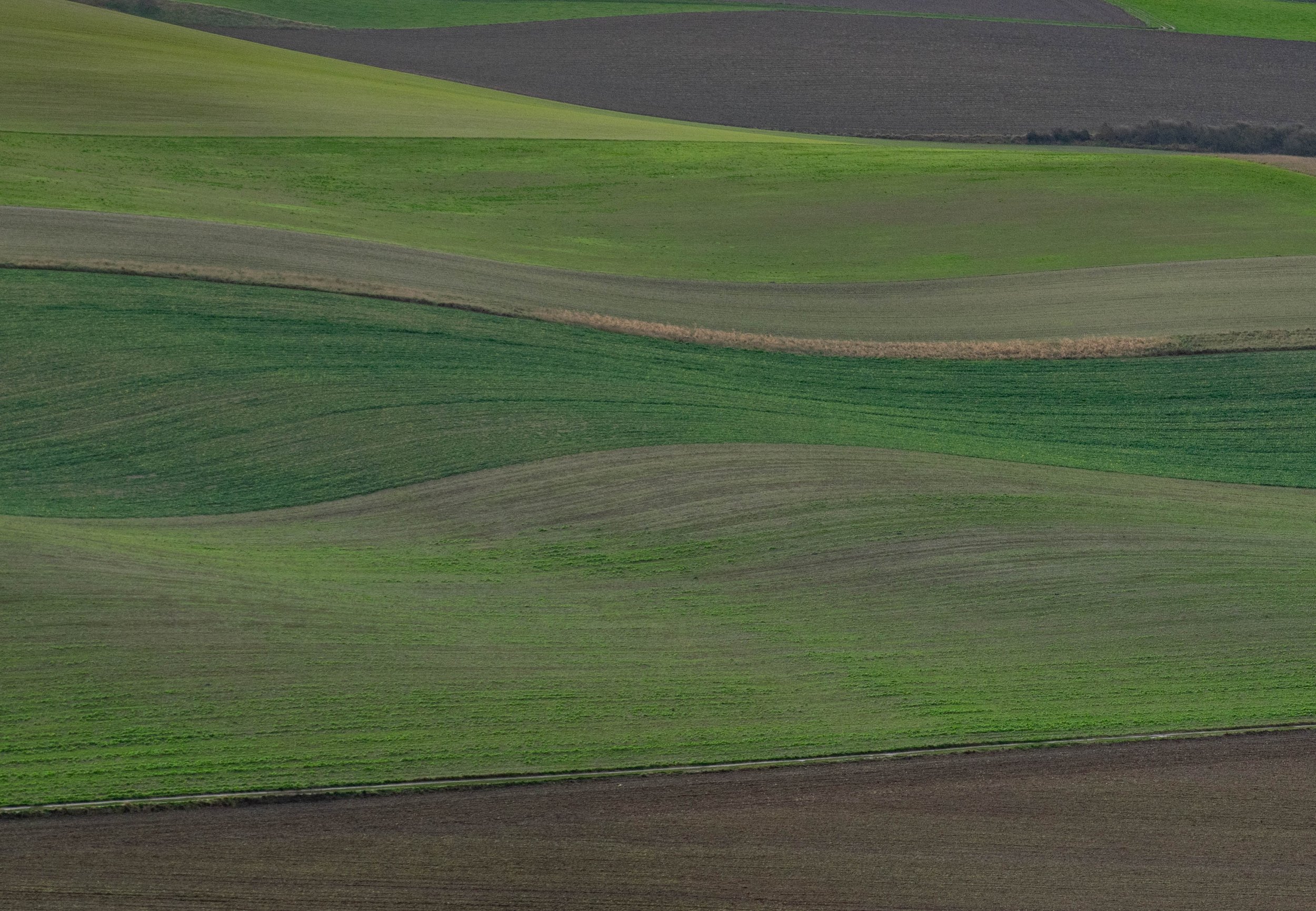
The landscapes of large scale farming are for me "quantum spaces": one passes - by car most often and especially not on foot - from one village to another, since the hamlets are very rare and the cities are compact and distant to each other. Thus, one makes "jumps" between villages, without stopping in between. In this interurban space, one does not meet pedestrians or walkers, a few rare cyclists of course, but above all people going from point A to point B, in a fast and efficient way, who travel along dense road axis where processions of semi-trailers pass by; as we are between Paris, the big ports of the Channel and the Netherlands, and Germany in the East. The only ones to really take over the space are the farmers, as if they had taken advantage of this empty ecological niche, overlooked by all, to use their powerful tractors and bring life to these barren expanses.
Whenever I meet farmers, I can feel the pride they take in their land, in their crops, and in their profession in general, and rightly so : it is a most noble profession in my opinion. It is more than a job, it is a cultural and ancestral heritage.
But what strikes me is how much agriculture, an activity deeply rooted in the soil, the terroir, passionately terrestrial and concrete, dependent on nature and all sorts of weather conditions, insects, diseases or in the long term, the condition of the soil, but which on the other hand, has also become dependent on international factors, highly variable like the price of gasoline, which is highly volatile, the stock market price of commodities, wars raging on the other side of the world or European agricultural policies. This paradox is as interesting as it is worrying
A recent creation on the scale of history, field crops, and agriculture in general for that matter, have become highly technical since the last century: highly specialized tools, advanced scientific concepts, soil science and the use of fertilizers or treatments, a more complex financial aspect too, in order to finally be in tune with the modern world, to remain competitive and productive, and to respond to the staggering needs of a "service" society, an office society where fewer and fewer want to do this job.
While this service society can more or less free itself from the soil -for a while only-, living off-ground in short, agriculture certainly cannot, and the gap between society and agriculture only creates risks as it grows wider.
These big machines remind me of monsters at rest, fearing the light, waiting in the shadows for the harvest season that is fast approaching, so they can make their engines roar
Eggs’ colour matching that of the hoe !
In a small and quiet village I meet a very nice farmer in the yard of his farm, a beautiful brick farmhouse rebuilt after the war with a large home, sheds, attics and garage to handle 150 hectares of land. I have the privilege of a tour in the building and a presentation of the machines. Two tractors to work in pairs during the big works of summer, the seeders adapted to different types of crops, the hoe -where we discover together a nest full of green eggs-, the plough and other tools. He is proud to show me his beautiful brick building that his family has been living in for many, many years, and his land, including a plot of flax. He explains to me that the production will be sold to a Belgian company and then sent to China, where the processed fiber will be woven, to finally bring back the textile or the finished clothes to Europe, to be sold. Oddity of our time.
This nest we find reminds me of how even in these gigantic plots, where a car is necessary for anyone to work in them, farmed with high tech machines, that nature and wildlife still have their place, they’re part of the landscape and the natural processes. Interactions between animals and farmers can certainly be positive but it often looks like the opposite : during my time in Picardy, I have heard farmers and agronomist complain about crows the most. They are an intelligent species and methodically dig holes with their beak in crops where corn seeds have been sown. Easier than finding food in the wild !
I found this shed in a remote village with a couple of machines and tools farmers tow to a tractor. They were simply lying there, under half an open sky, rusting year after year, since technological progress, continual increase of crop sizes have probably forced their owner to relegate them to this overgrown shed., for new, bigger, more efficient tools. A symbolic testimony of change in scale of agricultural pratice, technological progress and time passing.
The feeling emanating from this place was very special, these old machines looked like toys belonging to a kid who’s not longer interested in playing with them





